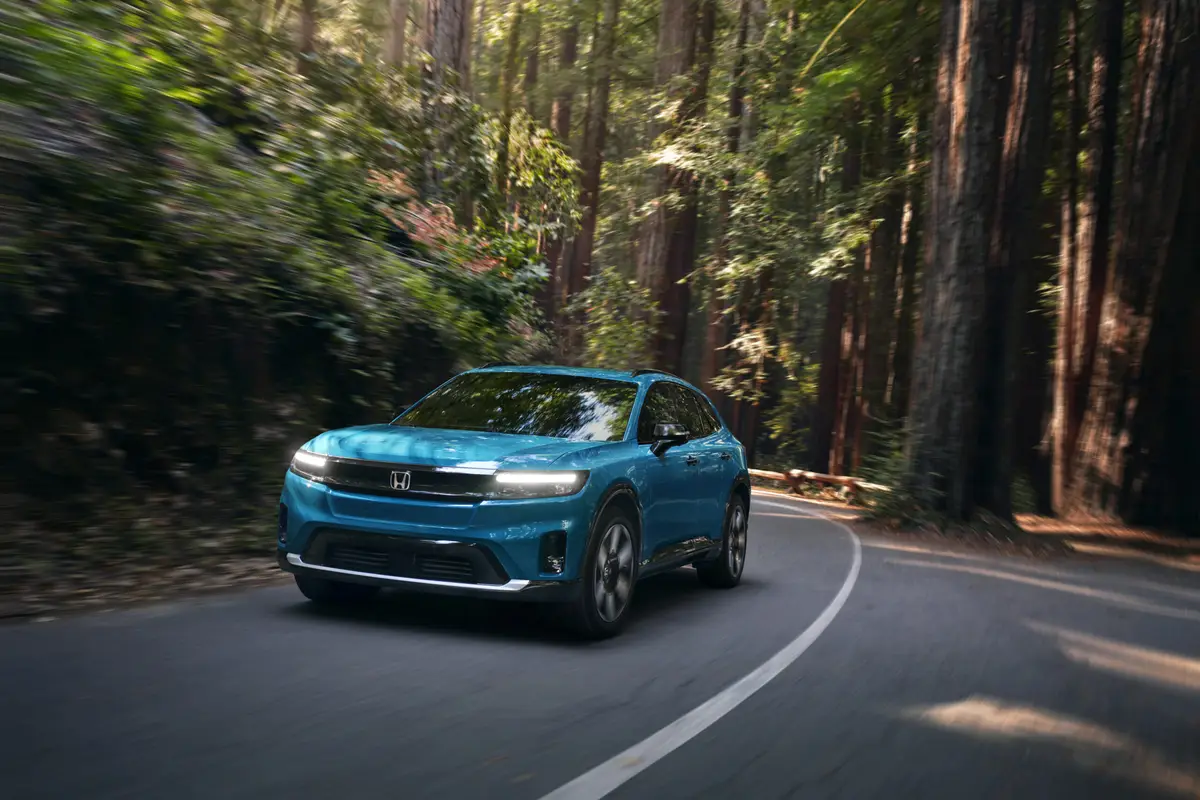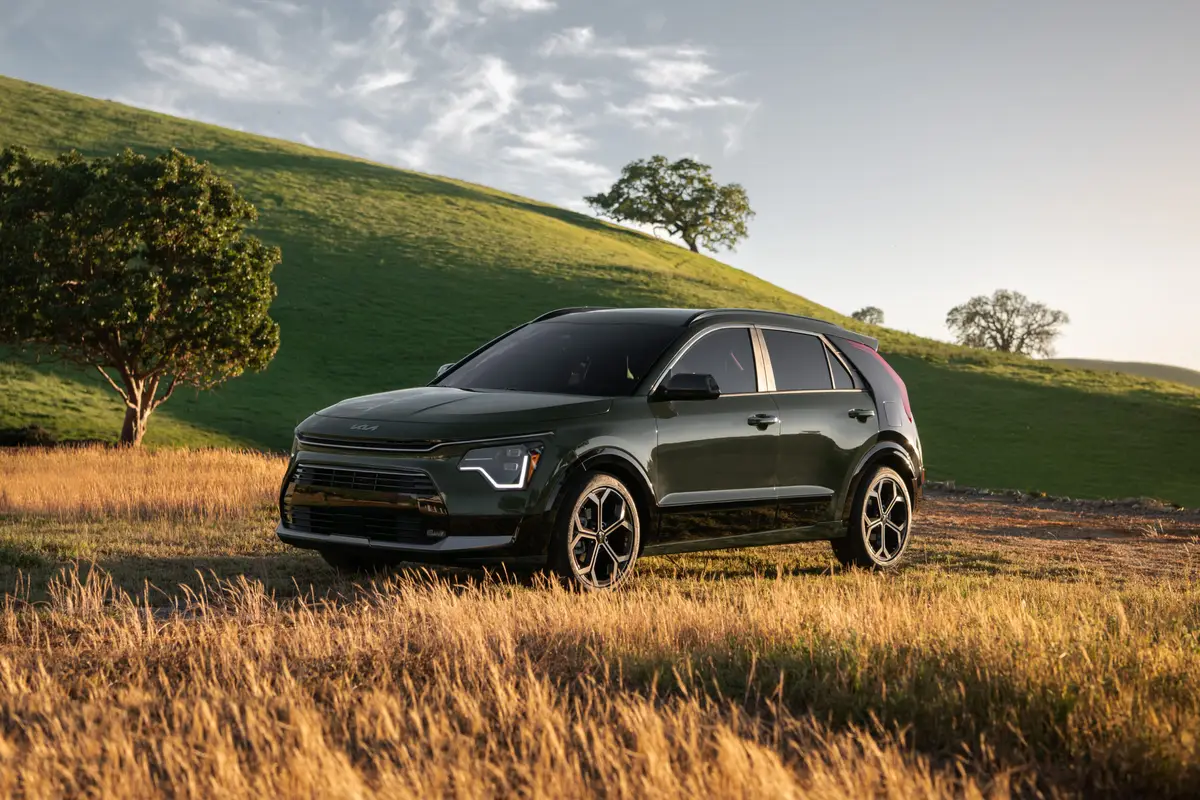Detroit Newspapers's view
They’re big, they’re bold, they’re beautiful, and they prove, once again, that Chrysler can bend that ol’ sheet metal better than just about anyone in the business.
The second-generation Chrysler Concorde and Dodge Intrepid may not generate the same kind of pleasant astonishment as the originals, which represented a clean break with the corporation’s stodgy square cars.
After all, when the original versions of these full-size sedans came along in 1993, Chrysler design was mired in mediocrity.
But in the intervening years, under the inspired baton of design chief Tom Gale, cutting-edge good looks have become the rule at Chrysler rather than the exception.
So has good handling, a corporate priority that owes a lot to Vice Chairman Bob Lutz and engineering chief Francois Castaing.
Nevertheless, the preproduction Intrepids and Concordes give every indication of being far better cars than their predecessors.
Better-looking, sure. In fact, in the Concorde’s case I think drop-dead gorgeous isn’t overstating the case.
But also better in terms of noise, vibration and harshness, the old NVH factor you hear engineers discussing all the time.
The original cars didn’t score so well on those elements, despite changes throughout their production cycle.
An asterisk here: Throughout their presentations, the various Chrysler executives insisted that we should no longer refer to the Concorde and Intrepid by their old code name, the LH cars. They say these are separate and distinct cars with no shared body panels, no interior commonality.
This raised a few eyebrows, including my own, since the two cars still share everything you can’t see, including engines, chassis, chassis components, even suspension tuning.
But hey, these are their cars, and they get to call ’em whatever they want.
I think we can all agree that these are big cars. Although the fundamental chassis dimensions haven’t been altered much — the wheelbase is unchanged at 113.0 inches — length has stretched considerably.
This is particularly true of the Concorde. At 209.1 inches, the new Concorde is 7.6 inches longer than the ’97. The Intrepid, in contrast, is 2.2 inches longer than its predecessor.
Width — 74.4 inches — hasn’t changed, and the height actually has been reduced by almost a half-inch.
There’s a little sleight of hand in that last dimension, though, because measured from the rocker panel to the rooftop, the new cars are actually taller, which adds up to more headroom.
Chrysler got the cars to look a little lower by reducing the ride height eight-tenths of an inch.
As you’d expect of a company that puts a high priority on vehicle dynamics, the chassis engineers have stiffened the basic platform, which was already fairly rigid. That’s a change that will almost always improve handling.
More important, given the weak suits of the original Concorde and Intrepid, a lot of work went into reducing interior noise and offering a more refined ride.
It’s also impressive that Chrysler seems to have achieved all these goals without adding weight, despite the increased length. In fact, both cars are a few pounds lighter than the previous models.
Spacious interiors
Like the exterior styling, the interiors are about as distinct from one another as they can be, including backseat roominess.
Both rear cabins are exceptionally spacious, but the Concorde holds the edge in both legroom and headroom, thanks to its higher rear roofline.
The Intrepid is the sportier of the two, with slightly more supportive bucket seats up front, white-on-black instruments and, in the SE model, Chrysler’s AutoStick four-speed semi-manual automatic transmission.
The Concorde is more conservative, with plenty of wood grain and a subdued but functional dashboard treatment: white-on-black instruments and a simple center stack for the c mate and audio controls, which feature good-sized knobs and switches and are easy to use on the first try.
About the only element that seems to have missed scrutiny in the dashboard redesign is the ignition switch, which is still incorporated into the steering column.
Other manufacturers are moving the switch back onto the dashboard, where it’s much easier to see and get at.
Safety and power
Although the redesigned chassis incorporates upgrades in crashworthiness, passive safety features are otherwise average: dual air bags of the new reduced-power variety, three-point seat belts and side-impact door beams. No side air bags.
On the other hand, as big cars go, the new Chrysler and Intrepid should be better than average in the active safety department.
The brakes are beefier up front, although antilock brakes are standard only on the upscale Concorde LXi and Intrepid ES, and both cars are agile in emergency maneuvers.
Power is an important element in avoiding accidents, as well as in all-around driving pleasure, and there’s more of that, too, thanks to a pair of new aluminum V6 engines.
The 2.7-liter base engine, rated at 200 horsepower and 190 foot-pounds of torque, is truly all new: dual overhead cams, 24 valves and it runs on unleaded regular.
The single overhead cam 3.2-liter that’s standard in the Intrepid ES and Concorde LXi is derived from Chrysler’s 3.5-liter engines, and generates 225 hp and 225 foot-pounds of torque, in contrast to the 3.3’s 161 hp and 181 foot-pounds.
(That output is also better than the 214 hp of the previous 3.5-liter overhead cam version that was tops for this line. We’ll see a new 250-hp aluminum version of the 3.5-liter engine when the new LHS and 300 models come along next summer.)
Enough talk. Let’s go for a ride.
Big and powerful
Our route led through the rocky hill country around Austin, and I have since had a couple of quick drives on some bumpy Michigan back roads.
I’ll focus on the Concorde LXi with these impressions, partly because I’ve spent more time in that model and partly because I think it’s more dramatic in appearance than the more evolutionary Intrepid.
Impression number one: This is a big car, and it feels big in rapid maneuvers.
But there’s a difference between big and ponderous. The Concorde is no Neon in tight switchbacks, but its responses are positive, its steering dead accurate, its body roll nicely controlled, and it maintains the desired line even in the bumpiest corners.
Impression number two: Chrysler has done an excellent job of making the suspension more compliant without sacrificing crisp handling.
The small bumps and expansion joints that produced noticeable jolts in the previous Concorde and Intrepid have been tamed. The ride still tends toward firm, but the suspension absorbs those nasty warts and potholes without compromising response.
Im pression number three: Interior noise is definitely down, though we’ll have to wait for a production car to make a more definitive judgment on this issue.
But based on Texas touring, it seems safe to predict that you’ll hear less wind noise, engine noise and road noise in a new Concorde.
Final impression: Power. There’s definitely more of it.
Neither of these new engines will pin you against the seat, but both do a respectable job, and the four-speed automatic transmissions make the most of their power characteristics.
We’re not sure about pricing yet, but our estimates are based on strong hints from Chrysler insiders: about $22,000 for a Concorde LX, about $21,000 for the standard Intrepid.
If we’re close, it looks as if Chrysler will once again be offering a whole lotta car for the money.
Not to mention the best-looking new car — the Concorde — anyone’s rolled out in a long time.
SPECS
RATING: No rating given to pe roduction cars
VEHICLE TYPE: Front-engine, front-drive, full-size sedan
KEY COMPETITORS: Buick LeSabre, Mercury Grand Marquis, Oldsmobile Intrigue
BASE PRICE: $22,000 (estimate for LX)
PRICE AS TESTED: $27,000 (estimate for LXi)
STANDARD EQUIPMENT (LXi): ABS, dual air bags, automatic transmission, automatic climate control A/C, AM/FM/CD/cassette audio, power windows, power driver’s seat, power mirrors, leather seats, tilt steering, cruise control, antitheft system
SPECIFICATIONS:
(manufacturer’s data)
Engine 225-hp 3.2-liter V6
EPA fuel econ. 19 city/28 hwy.
Curb weight 3,430 pounds
Wheelbase 113.0 inches
Length 209.1 inches
Width 74.4 inches
Height 55.9 inches
Assembled Bramalea, Ont.
Latest news



